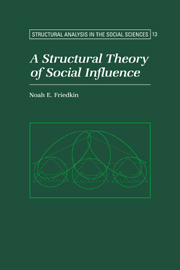3 - A Setting in the Scientific Community
Published online by Cambridge University Press: 23 December 2009
Summary
Abstract. To illustrate and develop my arguments, I analyze the faculties of science in the physical, biological, and social science divisions of two elite universities. In this chapter, I revisit the theoretical issues introduced in Chapters 1 and 2 and show how these issues are manifested in the scientific community. I argue that agreements formed among scientists in elite universities contribute to a nascent form of corporate organization that Durkheim argued was crucial for the coordination of a highly differentiated social structure.
Anomy in Science
In The Division of Labor in Society, Emile Durkheim (1933) illustrates his concept of anomy with an analysis of the scientific community. Anomic social organizations lack the system of rules and conventions – agreements between actors in different social positions – that permit the coordination of interdependent parts:
Until very recent times, science, not being very divided, could be cultivated almost entirely by one and the same person. But as specialization is introduced into scientific work, each scholar becomes more and more enclosed, not only in a particular science, but in a special order of problems. Science, parceled out into a multitude of detailed studies which are not joined together, no longer forms a solidary whole.
(Durkheim 1933, p. 356)- Type
- Chapter
- Information
- A Structural Theory of Social Influence , pp. 35 - 50Publisher: Cambridge University PressPrint publication year: 1998

